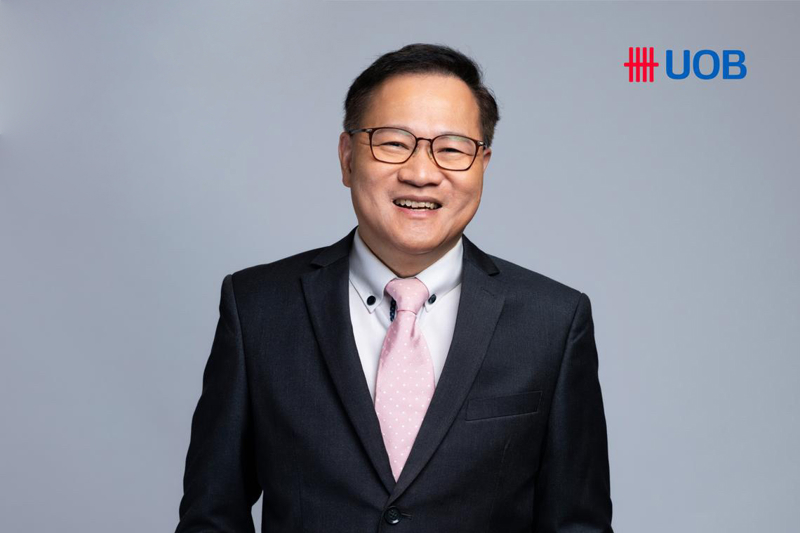We’ve heard the phrase “China Plus One” mentioned during the ASEAN Conference 2025. From your perspective, how has that concept evolved?
The concept of “China Plus One” has been around for quite some time and Vietnam was that “one.” That’s why Vietnam became so significant. Many large corporations, including major banks like UOB, established a strong presence in Vietnam early on. There was already a deep trust in Vietnam’s stability and environment.
But today, it’s no longer just “China Plus One.” It’s “China Plus Plus Plus Plus… Vietnam.” Businesses aren’t just looking for one alternative location — they’re diversifying across multiple countries. Some say, "We can’t put everything in Vietnam,” so they add other locations like Malaysia.
Now, it’s no longer about country-level diversification alone. It's about industrial corridors. In Vietnam, that might mean Ho Chi Minh City, Hanoi, the VSIP zones, and other industrial clusters. In Malaysia, it’s Johor, Penang, or Sarawak. So you’re seeing a full ecosystem developing across regions not just countries.
But this is just the beginning. Change is constant, and we’re going to see even more transformation going forward. We’re always looking for the next shift and that, in my view, is crucial.
What about the global economy and de-risking policies? Do you think de-risking is driving real business decisions in Asia?
There’s a very interesting perspective I heard recently that the global economy is now in a "de-risking era." If you trace this back, the world since World War II has been driven by Americans taking the lead. And the rest of the countries all follow the way the American works..
Whether it’s trade rules, capital market flows, or regulatory frameworks, much of it has been defined by the United States. If you look at the global economic landscape today, the largest economy is the U.S., followed by China, then Europe (or Germany), and Japan.
Japan and Germany, for instance, emerged from World War II and were significantly rebuilt with American support. As a result, the American model of doing business was widely adopted.
A major turning point came when China joined the WTO. At that time, China made up just 2% of global GDP. Today, that figure is around 15%. That growth surprised the U.S. which still holds about 25% of global GDP and they began to push for a reset in global supply chains.
This shift has had a huge impact, particularly on ASEAN. Since around 2016 when anti-globalization sentiment began rising ASEAN has emerged as a strategic alternative. In terms of global FDI, ASEAN’s share rose from 6% in 2015 to 18% today. That’s a threefold increase. And we’re not talking about projected figures these are real flows, happening now.
How has ASEAN managed to maintain its economic appeal amid global uncertainties, especially the recent slowdown in China?
The slowdown in China is certainly being felt, but ASEAN has shown resilience through what I call a “cushioning effect” driven by the realignment of global supply chains. What sets ASEAN apart is its geopolitical neutrality and strong regional cooperation. Rather than taking sides, ASEAN remains committed to openness and collective stability under the “ASEAN Outlook,” positioning itself as a steady hub amid global uncertainty. That’s the region’s strength in a rapidly shifting world.
Last year, you described Vietnam as a “bright star” within ASEAN. What factors make Vietnam stand out in the eyes of foreign investors, especially in the current global context?
Vietnam has consistently attracted strong FDI over the past decade. Several factors contribute to this: a hardworking and well-educated labor force, a competitive cost structure, and a clear strategic position in the alternative supply chain. Labor remains affordable, and investors are increasingly viewing Vietnam as a reliable and efficient manufacturing base.
Do you believe Vietnam will continue to attract more foreign investment in the coming years?
Absolutely. Vietnam will remain on the radar of foreign investors.
Take VSIP the Vietnam Singapore Industrial Parks. Five years ago, there were just nine zones. Today, there are 18. That’s a huge jump. One key example is Nghe An, where we’re seeing rising FDI inflows and more companies setting up operations. It’s a strong indicator of investor confidence in Vietnam.
While no single country will dominate, Vietnam is set to capture a significant share alongside Indonesia and Malaysia. It’s all part of a broader diversification strategy. I see ASEAN as a whole benefiting from this trend, rather than individual countries competing in isolation.
Has UOB observed any shift in investor sentiment toward Vietnam in recent years?
Following the tariff-related announcements in April, we surveyed around 100 investors. About 90% said they had no intention of changing their plans in Southeast Asia, including Vietnam. That said, a more cautious tone has emerged. Investors are becoming increasingly prudent. Instead of purchasing land outright, they may choose to lease. Rather than investing $200 million at once, they might spread the investment over time.
Some are now considering contract manufacturing (OEM) as an initial step, instead of immediately establishing full production facilities. This is not a sign of withdrawal; it reflects a more risk-averse approach. However, we must be realistic—integrating new suppliers into global supply chains is a rigorous process for multinationals. It cannot happen overnight.
From your experience, what sectors are currently attracting the most FDI interest in Vietnam and across ASEAN?
It depends on the country, but broadly speaking, there is strong investor interest in green energy, digital infrastructure, and fintech. If you look at what is shifting out of China, it is often labor-intensive manufacturing, consumer goods, and certain segments of technology that require geographic diversification. That said, not everything can move out of China. Take electric vehicles (EVs) as an example. Even if the assembly is relocated to Thailand, the core engine components still come from China.
The Vietnamese government has made notable policy shifts toward a green transition. What’s your view on Vietnam’s green ambitions?
“Going green” is an essential part of the journey for every economy. However, for emerging markets, it will take time. Take Indonesia as an example: about 70% of its power supply still comes from fossil fuels. That cannot change overnight. At UOB, we advocate for a just transition, one that balances environmental goals with economic development and livelihoods. It is about creating opportunities and sustainable growth while ensuring that no one is left behind.
As a developing market, where do you see untapped potential for FDI inflows into Vietnam?
Vietnam is still very much in an active FDI attraction phase. Many sectors that are drawing investment today have not yet reached their full potential. Manufacturing remains strong, particularly in electronics, E&E, TMT (technology, media, and telecommunications), and the consumer sector.
Interestingly, we continue to see significant interest from Taiwanese and Chinese investors. Textile is one of the big advantages of Vietnam. While some may consider textiles low-value, Vietnam’s strength in this area is unique. Whenever global supply chain leaders talk about textile production, Vietnam is always part of the conversation.
How is UOB’s FDI Advisory team supporting businesses entering the Vietnamese market?
At UOB, our role goes beyond banking. Our FDI Advisory team works closely with corporates to help them navigate new markets, especially in Vietnam. We connect them to government agencies, explain local regulations, and advise on incentives such as grants or local content requirements, including how to meet rules of origin in export markets.
We also introduce investors to trade associations to help integrate them into local supply chains and connect them with professional services in legal, human resources, and accounting. One challenge many Chinese companies face upon arriving in Vietnam is language, so having the right HR support is crucial. We help them understand how to work with local talent and comply with Vietnamese labor laws.
Our team also guides them through the regulatory complexity of ASEAN by assisting with licensing, clarifying market-specific policies, and fostering cultural alignment. These are essential steps for a smooth market entry and long-term success.
UOB recently announced the plan to build its new headquarters building in Ho Chi Minh City, Vietnam. Could you share the rationale behind this move?
Yes, that is a move that signals our long-term commitment. While most banks view real estate as a non-core asset, we see it differently.
In Chinese culture, there is a saying: “Even if the monk leaves, the temple remains.” Owning a building shows our clients that we are here to stay. It gives them confidence that UOB is not just entering the market opportunistically but is truly committed to supporting Vietnam’s economic development for the long term.
Our physical presence in places like Singapore, Malaysia, Thailand, Indonesia, China, and Vietnam reflects our investment in building long-term partnerships. That is the difference in how we operate.
This year marks 60 years of Singapore–Vietnam diplomatic relations. How is UOB, as a Singapore-based institution, contributing to stronger bilateral and ASEAN connectivity?
UOB has been present in Vietnam for 32 years. I still remember celebrating that milestone not long ago. Singapore and Vietnam marked 50 years of diplomatic ties two years ago, and now Singapore is celebrating its SG60 while UOB is marking its 90th anniversary.
These milestones reaffirm our commitment not only to Vietnam but also to the ASEAN region as a whole. We are not just looking at UOB at 90; we are planning for UOB at 100. Similarly, we are not only celebrating the past 60 years of Singapore; we are focused on how we can strengthen the next 40 years of economic and social connectivity.
We recently invested in building a new headquarters building here and took over Citi’s retail franchise in Vietnam. That speaks volumes about our intention to grow alongside Vietnam’s economy, its people, and its communities.









 Google translate
Google translate